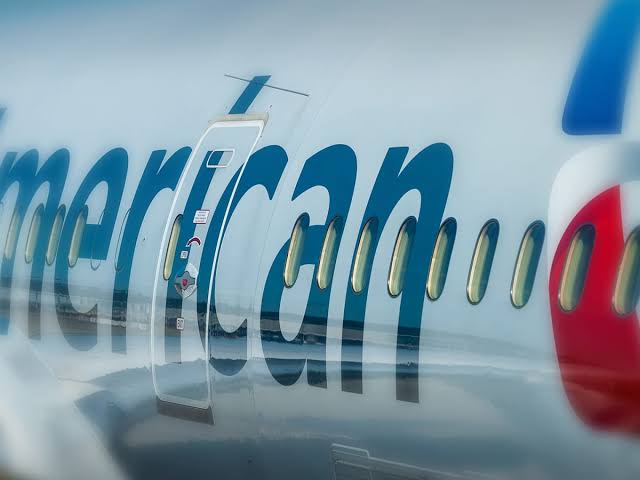American Airlines sounds alarm about ongoing financial challenges
While American Airlines (AAL) has previously hoped to improve profits through discounting and attracting business travelers, neither strategy provided the desired results.
On July 25, the Fort Worth-based airline cut its profit forecast to between $0.70 and $1.30 a share — a significant drop from the $2.25 to $3.25 it forecast in April and below analyst expectations of $1.10 to $2.60. It further estimated a revenue drop of up to 4.5% in the third quarter. The $717 million in net income it reported in the second quarter is a 46% drop from a year ago. American CEO promises to address challenges ‘head-on, with clear and decisive actions’
“We are taking this challenge head-on, with clear and decisive actions to deliver on a strategy that maximizes our revenue and profitability, and importantly, one that makes it easy for customers to do business with American,” Isom said in a statement on the earnings. “When we return to the level of revenue generation we know we can achieve, and we couple that with our operational reliability and best-in-class cost management, we will unlock significant value.”While some analysts expected a drop due to the slashed outlook, American shares spiked upon Isom’s news of how the airline would change its strategy going forward. Friday morning started with shares up just over 4% at $10.60.
Isom further said that the airline lost $1.5 billion catering to budget-hunting travelers at a time when competitors like Delta (DAL) and United Airlines (UAL) made a push to win over business and corporate travelers.’Swift and aggressive actions’ (here is what that looks like)
Travel companies, in particular, were left out of the discount fares and so went with other competitors — to rectify the situation, American said it is taking “swift and aggressive action to reorient its sales and distribution strategy in ways that continue to be customer-centric while addressing feedback from corporate and agency partners.”
Specifically, that means expanding and improving its AAdvantage Business benefits program as well as renegotiating contracts with several corporate clients who were left unhappy over the last year.
American is not the only airline that announced a drastic need to improve finances fast. Also on July 25, Southwest Airlines (LUV) CEO Bob Jordan said that “urgent and deliberate steps” were needed to break through a series of unprofitable quarters.
The most drastic of these steps is a commitment to getting rid of the airline’s decades-old open seating policy with travelers soon able to pay extra for an assigned seat. While the ability to pick from any available seat earned Southwest the love and loyalty of some customers, seat selection is also a profit stream that many airlines rely on.
American Airlines (AAL) has faced significant challenges in its efforts to improve profitability. Despite previous strategies focusing on discounting and attracting business travelers, these approaches have not yielded the desired results. As a result, the Fort Worth-based airline has revised its profit forecast, cutting it to between $0.70 and $1.30 per share, a stark decrease from the $2.25 to $3.25 forecasted in April and well below analyst expectations of $1.10 to $2.60. This adjustment accompanies an estimated revenue drop of up to 4.5% in the third quarter. The net income reported in the second quarter was $717 million, marking a 46% decline from the previous year.
American Airlines CEO Robert Isom has vowed to tackle these challenges with clear and decisive actions aimed at maximizing revenue and profitability. In a statement addressing the earnings report, Isom emphasized the airline’s commitment to a strategy that enhances operational reliability, cost management, and customer satisfaction. He expressed confidence that once the airline returns to its expected revenue generation levels, coupled with its operational reliability and cost efficiency, significant value would be unlocked.
While the market anticipated a drop due to the revised outlook, American Airlines shares experienced a surprising spike following Isom’s announcement of strategic changes. On the morning of July 25, shares rose by just over 4%, reaching $10.60. This response from investors highlights a cautious optimism regarding the airline’s new direction.
One of the key points addressed by Isom was the airline’s substantial loss of $1.5 billion from catering to budget-conscious travelers at a time when competitors such as Delta (DAL) and United Airlines (UAL) were focusing on attracting business and corporate travelers. In response, American Airlines has decided to take “swift and aggressive action” to realign its sales and distribution strategy in a customer-centric manner while addressing feedback from corporate and agency partners.
A major component of this strategy involves expanding and enhancing the AAdvantage Business benefits program. The airline is also renegotiating contracts with several corporate clients who were dissatisfied over the past year. These steps are intended to rebuild relationships with corporate partners and regain their business.
American Airlines is not alone in its urgent need to improve financial performance. On the same day, Southwest Airlines (LUV) CEO Bob Jordan announced the necessity for “urgent and deliberate steps” to break a series of unprofitable quarters. One of the most notable changes for Southwest involves the end of its long-standing open seating policy. The airline plans to introduce assigned seating, allowing travelers to pay extra for a specific seat. While the open seating policy had garnered loyalty from some customers, the introduction of seat selection is expected to generate additional revenue, a strategy commonly employed by other airlines.
These developments underscore a broader trend within the airline industry, where companies are re-evaluating their strategies and making significant adjustments to improve financial performance. The shift towards more customer-centric approaches and the renegotiation of corporate contracts are indicative of the airlines’ efforts to adapt to changing market dynamics and customer expectations.
For American Airlines, the road ahead will involve navigating these strategic shifts while maintaining operational reliability and cost efficiency. The airline’s ability to successfully implement these changes and regain the confidence of corporate clients and business travelers will be crucial in achieving its long-term financial goals.
Moreover, the competitive landscape within the airline industry remains intense, with carriers constantly seeking ways to differentiate themselves and attract customers. As American Airlines and Southwest Airlines take bold steps to enhance their profitability, it will be important to monitor how these changes impact their market position and overall financial health.
American Airlines’ recent profit forecast revision and the subsequent strategic adjustments highlight the challenges and opportunities facing the airline. By addressing these challenges head-on and implementing customer-centric strategies, American Airlines aims to restore its financial performance and unlock significant value for shareholders. The airline industry as a whole is witnessing a period of transformation, and the actions taken by major players like American Airlines and Southwest Airlines will shape the future of the sector.






